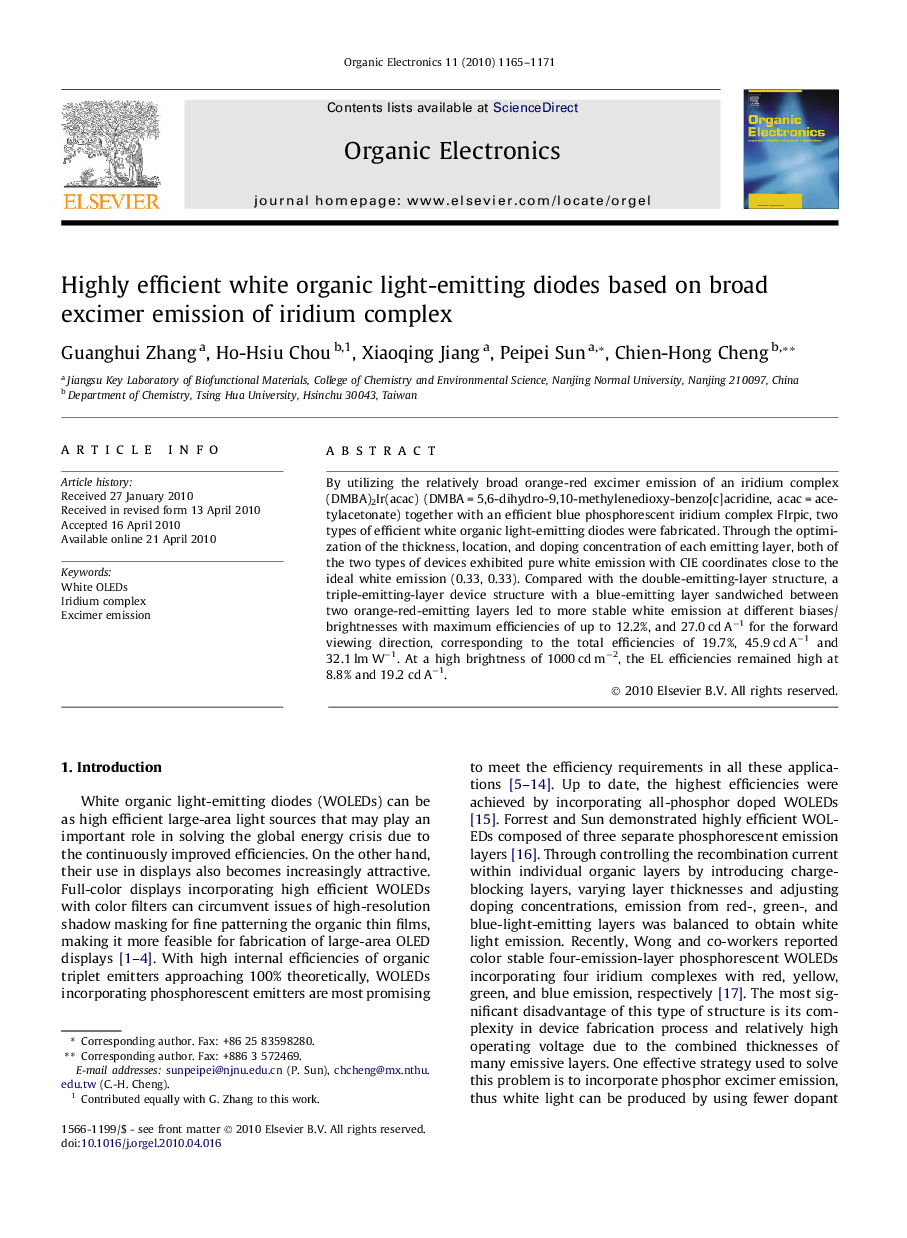| Article ID | Journal | Published Year | Pages | File Type |
|---|---|---|---|---|
| 1267801 | Organic Electronics | 2010 | 7 Pages |
By utilizing the relatively broad orange–red excimer emission of an iridium complex (DMBA)2Ir(acac) (DMBA = 5,6-dihydro-9,10-methylenedioxy-benzo[c]acridine, acac = acetylacetonate) together with an efficient blue phosphorescent iridium complex FIrpic, two types of efficient white organic light-emitting diodes were fabricated. Through the optimization of the thickness, location, and doping concentration of each emitting layer, both of the two types of devices exhibited pure white emission with CIE coordinates close to the ideal white emission (0.33, 0.33). Compared with the double-emitting-layer structure, a triple-emitting-layer device structure with a blue-emitting layer sandwiched between two orange–red-emitting layers led to more stable white emission at different biases/brightnesses with maximum efficiencies of up to 12.2%, and 27.0 cd A−1 for the forward viewing direction, corresponding to the total efficiencies of 19.7%, 45.9 cd A−1 and 32.1 lm W−1. At a high brightness of 1000 cd m−2, the EL efficiencies remained high at 8.8% and 19.2 cd A−1.
